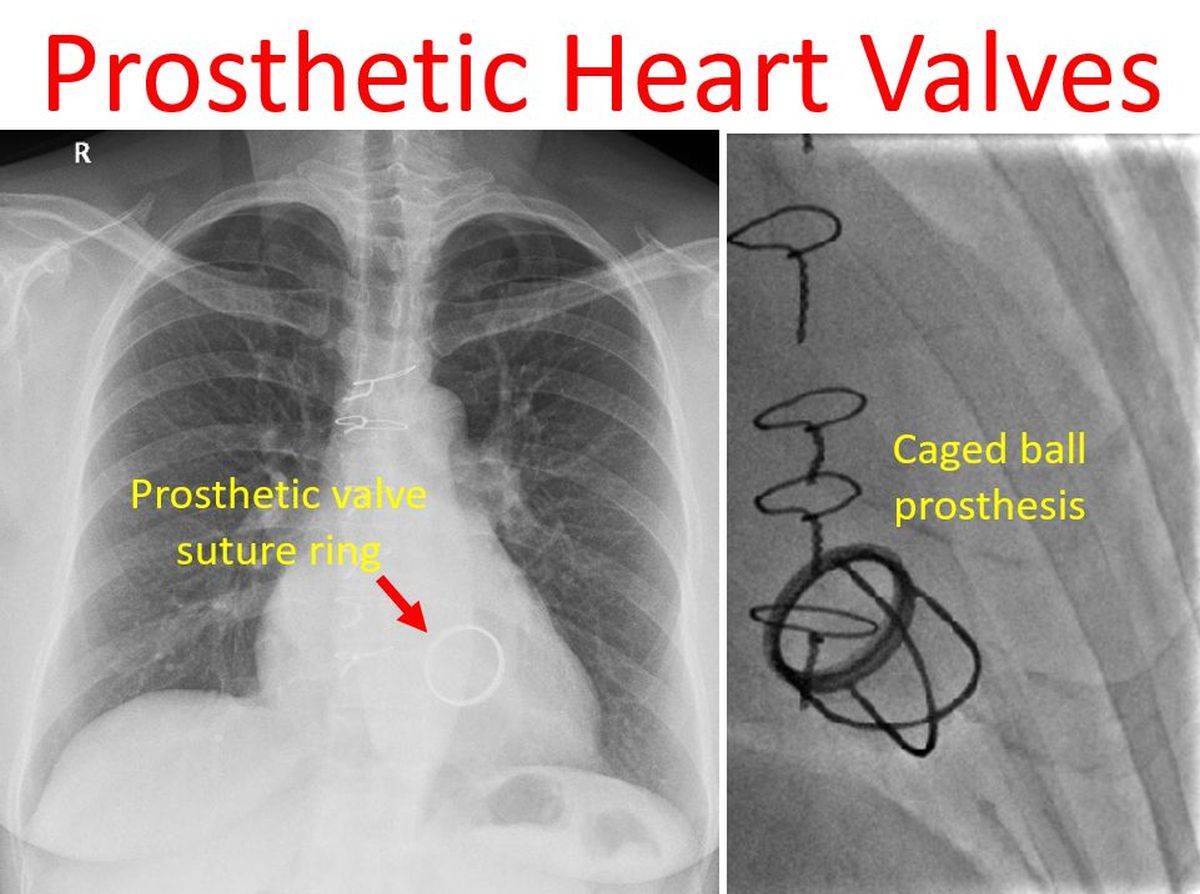Prosthetic heart valves
Prosthetic heart valves
Prosthetic heart valves used for replacement of diseased valves can be either mechanical prosthesis or tissue valves (biological valves). Mechanical heart valves can be of the caged ball variety or having a single tilting disc or with two leaflets. Bileaflet valves have the advantage of providing a central flow of blood while the single and caged ball devices provided a lateral flow. Tissue valves or bioprosthesis can be obtained from animals which are known as xenografts which can be of bovine, porcine or equine origin.

Valves obtained from human cadavers are known as homografts. Availability of homografts are limited due to obvious reasons. Xenografts can be stentless, without any supporting frame or with a supporting framework. Most recent advance in the field of prosthetic valves are the percutaneously implantable bioprosthetic valves which are stented collapsible valves which can be mounted on catheters. Percutaneous aortic valve replacement both by the trans apical route and the transfemoral route are coming up in a great way.
Mechanical prosthetic heart valves require lifelong anticoagulation as they are prone for thrombosis. Anticoagulation is monitored using a test known as PT-INR. Bioprosthetic valves do not need anticoagulation after the initial three months needed for endothelialization. Prosthetic heart valve thrombosis is a dreaded complication as they present with acute valve obstruction which can cause pulmonary edema in case of left sided valves. Massive thromboembolism to vital vascular territories can also occur following prosthetic valve thrombosis.
While bioprosthesis are less prone for thrombosis, they are more prone for degeneration. Degeneration is more in younger age group because of hemodynamic trauma and less likely in the elderly with less hyperdynamic state. Bioprosthesis is also preferred in the tricuspid position where the hemodynamic load is lower, but the risk of thrombosis is much higher due to the lower velocity of blood flow. Hemolysis due to the shear forces induced on the red blood cells is another potential complication of prosthetic heart valves.
Caged ball valves are noisier and more prone for thrombosis. Though single disc tilting disc valves have a good hemodynamic profile, they have the potential risk of acute hemodynamic compromise if the leaflet gets stuck due to thrombosis. Bileaflet valves have an extra point here in that even if one leaflet gets stuck, the other leaflet can still move, providing space for blood flow and avoiding total valve obstruction.
